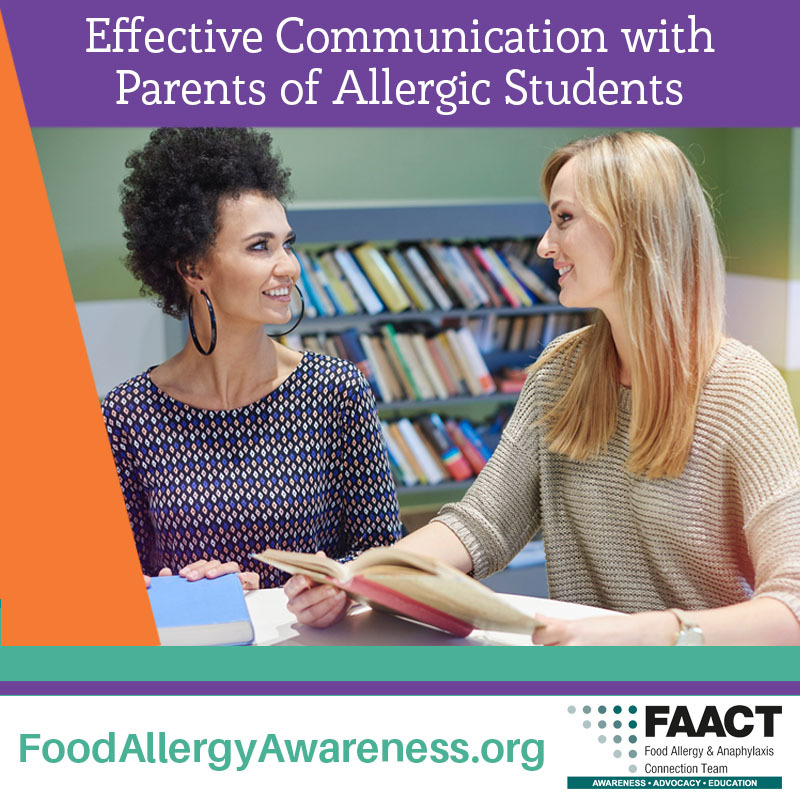Effective Communication with Parents of Allergic Students

As a teacher, one of your top priorities is ensuring the safety and well-being of every student in your classroom. With the increasing prevalence of food allergies among children, it becomes crucial to navigate the educational environment while being mindful of these potential health risks. Understanding and addressing food allergies is not just about managing classroom snacks or activities—it's about fostering a safe and inclusive environment where all students can thrive.
In addition, educating parents about the school’s food allergy policies, the importance of reading ingredient labels, and the necessity of having emergency action plans in place can empower them to collaborate more effectively with you. This partnership not only safeguards the health of allergic students but also fosters a sense of community and shared responsibility.
Open lines of communication help build trust and ensure that you are well-prepared to handle any allergy-related situations that may arise. By actively engaging with parents, you can gain valuable insights into each child's specific needs and create a tailored plan to prevent allergic reactions.
In this blog, we will explore how you can establish communication channels and provide valuable education for parents about allergies this school year. From initial conversations to ongoing updates, we’ll cover practical strategies and tips to ensure that every student feels secure and valued in your classroom. Together, we can create a learning environment that prioritizes safety and inclusivity for all.
Establish Communication Channels
Establishing clear and effective communication channels with the parents of allergic students is paramount to ensuring their safety.
Here’s how you can organize and maintain these channels:
- Initial Meeting:
Begin by scheduling a meeting with the parents at the start of the school year. This initial conversation is important for understanding each student's specific allergies, triggers, and the severity of their reactions. Use this opportunity to discuss the child’s Allergy & Anaphylaxis Emergency Plan and any necessary medications with the school nurse, teachers, and anyone managing your child’s food allergies at school, such as epinephrine devices. - Ongoing Updates:
Regular communication is key. Set up a system for ongoing updates, whether through weekly emails, a dedicated communication app, or a section in the student's planner. This ensures that parents are kept informed about classroom activities, upcoming events, and any changes to snack or lunch routines. - Inclusive Environment:
Create an inclusive environment where parents feel comfortable reaching out to you. Encourage them to share any new information or concerns about their child's food allergies. Regular check-ins can help you stay updated on any developments and adjust plans accordingly. - Informational Sessions:
Consider hosting informational sessions for all parents in your class. This can help raise awareness and foster a supportive community where everyone understands the importance of food allergy safety.
By effectively maintaining these communication channels, you can create a safe and inclusive classroom environment for all your students.
Education for Parents on Food Allergies
Educating parents and nurses about food allergies is a vital component in creating a safe and inclusive environment for allergic students.
Here are key steps to take:
- Provide Comprehensive Information:
- To explain what food allergies are, consider utilizing FAACT's medically reviewed information.
- Discuss the potential severity of allergic reactions.
- Emphasize the importance of recognizing symptoms early and knowing the emergency steps to take.
- Distribute Educational Materials:
- Share information about the school’s food allergy policies and procedures.
- Include guidelines on reading ingredient labels and avoiding cross-contact.
- Outline the rules for bringing snacks or treats to the classroom.
- Host Workshops and Informational Sessions:
- Offer a platform for parents to ask questions and share experiences.
- Bring in board-certified allergists or medically vetted experts to discuss managing food allergies.
- Provide practical demonstrations, such as how to use the different epinephrine devices.
- Encourage Open Dialogue and Collaboration:
- Create a community where parents feel comfortable discussing their child’s needs.
- Encourage sharing of best practices among parents.
By educating parents about food allergies, you can foster a supportive environment that prioritizes the health and safety of all students. This collective effort helps build a cohesive and vigilant community, dedicated to keeping every child safe.
Check out our tips for communicating with school staff!
Communicate with Confidence with FAACT
Communicating with confidence about food allergies is essential for creating a safe and inclusive environment for all students.
At FAACT, we provide you with the tools and knowledge needed to effectively engage with parents and manage allergies in the classroom. By establishing clear communication channels, educating parents, and fostering a collaborative community, you can ensure that every child feels secure and supported.
Armed with the right information and a proactive approach, you can confidently navigate the complexities of food allergies, making your classroom a safer place for all.
Let FAACT be your guide, helping you protect and nurture every student under your care.
Do you want to learn more about FAACT? Find us on Facebook, Instagram, X, LinkedIn, Pinterest, TikTok, Threads, and YouTube!

